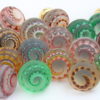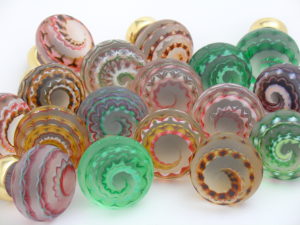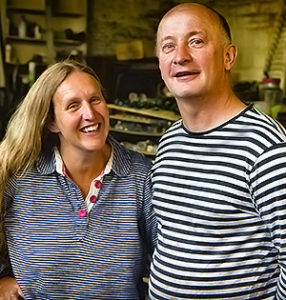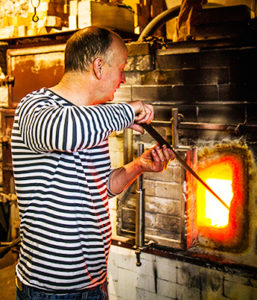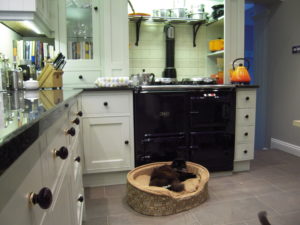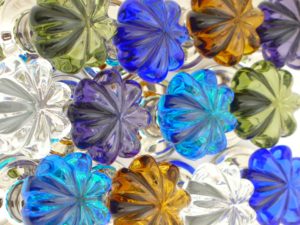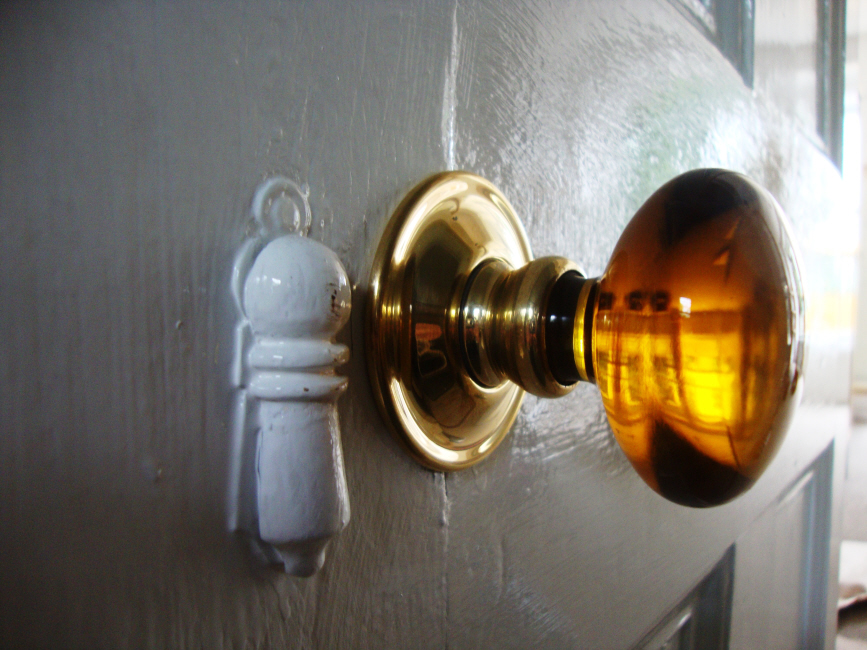
From Humble Beginnings to Exquisite Art: A Journey Through 400 Years of Glass Door Knob Design
The seemingly unremarkable door knob – a functional object we encounter countless times a day – boasts a surprisingly rich history. Its evolution through the centuries reflects not just changing styles and materials, but also advancements in technology and societal preferences. Today, we embark on a fascinating journey through the world of glass door knobs, culminating in the exquisite handcrafted creations of Liam Carey, the artist behind Merlin Glass in Cornwall.
Early Beginnings: Functionality Reigns Supreme (1600s – 1800s)
The earliest known glass doorknobs emerged in the 17th century. These were rudimentary affairs, often crafted from clear or coloured glass blown into simple spherical shapes. These doorknobs were more about function than aesthetics, offering a more hygienic alternative to traditional wooden knobs, which were susceptible to harboring germs.
The Industrial Revolution and the Rise of Mass Production (1800s – Early 1900s)
The Industrial Revolution ushered in a period of mass production, with glass doorknobs becoming more widely available. This era saw the introduction of new techniques like mold-blowing, allowing for more intricate shapes and designs. Popular styles included knobs with geometric patterns, floral motifs, and even depictions of animals. However, the focus remained largely on functionality and affordability.
The Arts and Crafts Movement: A Return to Artisanship (Late 19th Century – Early 20th Century)
The Arts and Crafts Movement, a reaction against the perceived soullessness of mass production, celebrated handcrafted objects and traditional skills. This movement saw a renewed interest in hand-blown glass, with artisans creating unique and beautiful doorknobs featuring swirling patterns, vibrant colours, and intricate details.
Art Deco and the Age of Elegance (1920s – 1940s)
The Art Deco era, known for its geometric forms and bold colours, influenced door knob design as well. Streamlined shapes, chrome accents, and frosted glass became popular choices, reflecting the era’s emphasis on modernity and glamour.
Post-War Simplicity and the Rise of Modernism (Mid-20th Century)
The post-war period witnessed a shift towards simplicity and minimalism in design. Door knobs became smaller, sleeker, and often made from chrome or plastic. Functionality remained the primary concern, with aesthetics taking a backseat.
A Resurgence of Artisanship and the Rise of Colour (Late 20th Century – Present Day)
Recent decades have seen a resurgence of interest in handcrafted objects and a renewed appreciation for colour and texture. Artisans like Liam Carey of Merlin Glass are leading the charge, creating exquisite hand-blown glass doorknobs that are as much works of art as they are functional objects.
Merlin Glass: Where Tradition Meets Innovation
Nestled amidst the rolling hills and dramatic coastlines of Cornwall lies Merlin Glass, the brainchild of Liam Carey. Unlike mass-produced hardware, Liam’s creations are imbued with the soul of the artist who created them.
Liam’s journey began at the tender age of 16 when he discovered a passion for glassblowing. He honed his skills under the tutelage of experienced artisans, mastering the traditional techniques passed down through generations. At 21, he took over Liskeard Glass, renaming it Merlin Glass and embarking on a path of creative exploration.
A Passion for Colour and Timeless Design
Liam’s designs are a harmonious blend of inspiration, form, and nature. The rugged beauty of the Cornish countryside is a constant source of inspiration, reflected in the vibrant colours and organic shapes of his creations.
Merlin Glass offers a diverse range of nine main designs, each available in a spectrum of six captivating colours. These designs are not merely trendy; they showcase the timeless elegance of hand-blown glass, adding a touch of sophistication to any contemporary or traditional setting.
The Art of Glassblowing: A Meticulous Process
The creation of a Merlin Glass knob is a testament to Liam’s dedication to quality and craftsmanship. Each knob is a unique, hand-blown piece, crafted using traditional techniques passed down through generations.
Liam meticulously selects soda lime glass and carefully measures each ingredient to achieve the desired colour and finish. The glass is then melted in a pot furnace at temperatures exceeding 1000 degrees Celsius. Using a blowpipe and various tools, Liam gathers and shapes the molten glass with practiced precision.
After annealing, a process that ensures even cooling and prevents cracking, the knob is meticulously polished and assembled. Every step of the process demands skill, focus, and an unwavering commitment to excellence.
Beyond Functionality: A Touch of Art for Your Home
In a world dominated by mass-produced hardware, Merlin Glass knobs offer a refreshing alternative. These exquisite pieces are not just functional objects;


